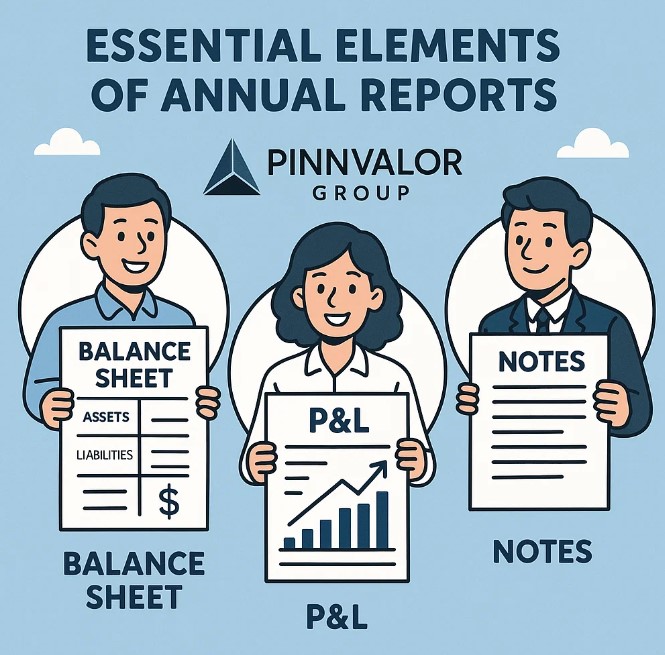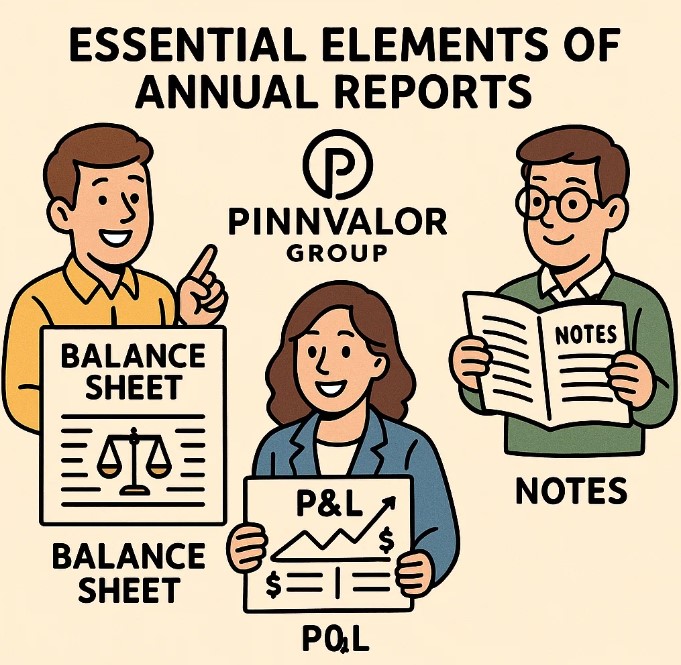
Essential Elements of Annual Reports: Balance Sheet, P&L, and Notes
Annual reports are critical documents that provide stakeholders with a comprehensive overview of a company’s financial health and performance over a fiscal year. Whether you are an investor, creditor, or a curious business enthusiast, understanding the key elements of an annual report helps you make informed decisions.
Want to decode the secrets hidden in a company’s Balance Sheet, P&L, and Notes?
The Profit & Loss statement tells the story of performance over time, showing not just profits or losses, but the efficiency and resilience behind every dollar earned and spent.”
Among the many sections in an annual report, three core components stand out: the Balance Sheet, the Profit and Loss Statement (P&L), and the Notes to the Financial Statements. Each element plays a unique role in painting a complete picture of a company’s financial position.
1. Balance Sheet: Snapshot of Financial Position
The balance sheet, also known as the statement of financial position, offers a snapshot of a company’s assets, liabilities, and equity at a specific point in time—usually the end of the fiscal year.
- Assets: What the company owns — including cash, inventory, property, and receivables.
- Liabilities: What the company owes — such as loans, accounts payable, and other debts.
- Equity: The residual interest belonging to shareholders after liabilities are deducted from assets, often referred to as net assets or shareholders’ equity.
The balance sheet follows the fundamental accounting equation:
Assets = Liabilities + Equity
This equation must always balance, reflecting the company’s financial stability or potential risks.
2. Profit and Loss Statement (P&L): Performance Over Time
Also called the income statement, the P&L statement summarizes revenues, expenses, and profits or losses over a period, typically a year or quarter. It shows how well the company has performed in terms of generating income and managing costs.
- Revenue: Income earned from sales of goods or services.
- Cost of Goods Sold (COGS): Direct costs attributable to producing the goods sold.
- Operating Expenses: Costs incurred in running the day-to-day operations.
- Net Profit or Loss: The bottom line after subtracting expenses from revenues.
The P&L statement allows stakeholders to assess profitability, operational efficiency, and trends that could impact future growth.
3. Notes to the Financial Statements: The Context Behind the Numbers
The notes, often overlooked by casual readers, are an integral part of annual reports. They provide detailed explanations, breakdowns, and disclosures related to figures in the balance sheet and P&L statement.
- Accounting policies and methods used.
- Details on significant transactions or events.
- Information on contingent liabilities or commitments.
- Explanations of unusual or non-recurring items.
- Breakdown of fixed assets, borrowings, and investments.
By offering transparency and context, the notes help users better understand the assumptions and judgments behind the numbers, ensuring a clearer and more reliable interpretation of the financial data.

Why Understanding These Elements Matters
- For Investors: It helps in evaluating financial health and investment potential.
- For Creditors: It provides insight into a company’s ability to meet its obligations.
- For Management: It aids in internal performance reviews and strategic planning.
- For Regulators: It ensures compliance with financial reporting standards.
Conclusion
The balance sheet, profit and loss statement, and notes together form the backbone of an annual report. Each serves a unique and vital purpose, providing stakeholders with a transparent and detailed view of a company’s financial story. By mastering these elements, you can better navigate financial reports, make smarter business decisions, and foster a deeper understanding of corporate performance.
